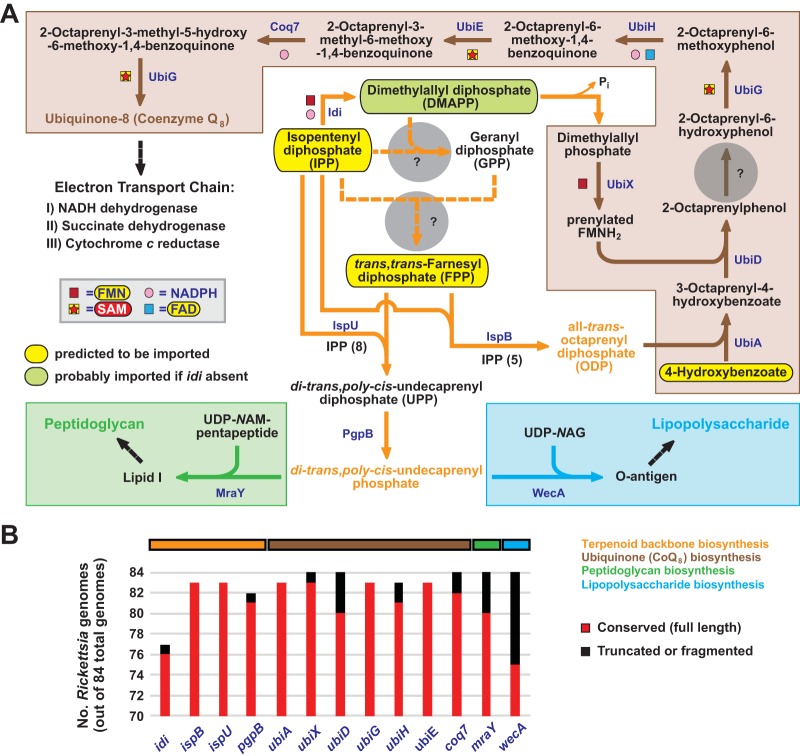FIG 3 .
Rickettsia species must import host isoprenes and terpenoids for the synthesis of ubiquinone and the lipid carrier of lipid I and O-antigen. (A) In the absence of a mevalonate or MEP/DOXP pathway for terpenoid synthesis, Rickettsia species must import IPP from the host. If Idi is present, as it is in some species, DMAPP can be synthesized to provide dimethylallyl phosphate for the ubiquinone (CoQ8) pathway. Otherwise, DMAPP must also be imported from the host. Dashed orange lines indicate that no enzymes are present to use IPP and DMAPP for GPP generation, and thus, FPP must also be acquired from the host. Gray circles depict holes in the pathways for the generation of both GPP and FPP. Host-acquired IPP and FPP can then be used by undecaprenyl diphosphate synthase (IspU) and octaprenyl-diphosphate synthase (IspB) to generate terpenoid backbones UPP and ODP, respectively. Via phosphatidylglycerophosphatase B (PgpB), UPP is then converted to di-trans,poly-cis-undecaprenyl phosphate, the lipid carrier for lipid I (green) and O-antigen (light blue). OPP and PHBA are used by PHBA polyprenyltransferase (UbiA) to initiate CoQ8 synthesis (brown). The lack of enzymes to either synthesize chorismate or convert it to PHBA indicates that rickettsiae must import host PHBA, which is an essential host metabolite provided by diet and/or the microbiome. The gray circle indicates a hole (UbiC) in the CoQ8 synthesis pathway. Note that all rickettsial genomes encode UbiB, a putative kinase with an unknown role in CoQ8 biosynthesis (172). (B) Genes involved in terpenoid backbone and CoQ8 biosynthesis are largely conserved. The complete distributions of these genes in 84 Rickettsia genomes (see Fig. S4G) indicate that the most basal lineage of spotted fever group rickettsiae (R. tamurae, R. monacensis, REIP, and R. buchneri strains) lacks idi and thus must also acquire DMAPP from the host.

